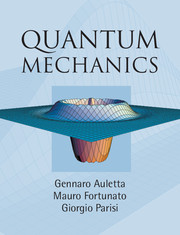Book contents
- Frontmatter
- Contents
- List of figures
- List of tables
- List of definitions, principles, etc.
- List of boxes
- List of symbols
- List of abbreviations
- Introduction
- Part I Basic features of quantum mechanics
- Part II More advanced topics
- Part III Matter and light
- 10 Perturbations and approximation methods
- 11 Hydrogen and helium atoms
- 12 Hydrogen molecularion
- 13 Quantum optics
- Part IV Quantum information: state and correlations
- Bibliography
- Author index
- Subject index
13 - Quantum optics
Published online by Cambridge University Press: 05 June 2012
- Frontmatter
- Contents
- List of figures
- List of tables
- List of definitions, principles, etc.
- List of boxes
- List of symbols
- List of abbreviations
- Introduction
- Part I Basic features of quantum mechanics
- Part II More advanced topics
- Part III Matter and light
- 10 Perturbations and approximation methods
- 11 Hydrogen and helium atoms
- 12 Hydrogen molecularion
- 13 Quantum optics
- Part IV Quantum information: state and correlations
- Bibliography
- Author index
- Subject index
Summary
The behavior of light and its interaction with matter is certainly one of the most interesting phenomena of physics. It has puzzled thinkers and scientists in ancient Greece (Archimedes) and through the Middle Ages, at least since the times of Robert Grosseteste (1168–1235), right up to the theories of Galileo Galilei and Isaac Newton. The classical electromagnetic theory of light (see Tab. 13.1) was beautifully established in the second half of the nineteenth century with the Maxwell equations. Quantum optics is nothing other than the quantum theory of light. It finds its roots in Planck's discovery (1900) that the assumption of energy quantization for a harmonic oscillator allowed us to solve the black-body problem (see Subsec. 1.5.1). The successive early steps that led to the quantization of the electromagnetic field include Einstein's explanation of the photoelectric effect with the introduction of the quantum of light (see Subsec. 1.2.1) and the interpretation of atomic spectra (see Subsec. 1.5.4).
Quantum optics is usually not covered by conventional textbooks on quantum mechanics. We include its discussion here for two main reasons: first, because it is a fundamental and advanced application of the basic framework of quantum mechanics, and, second, because in the last 30 years quantum optics has played (and is still playing) a major role in the advancement and understanding of quantum mechanics.
- Type
- Chapter
- Information
- Quantum Mechanics , pp. 455 - 510Publisher: Cambridge University PressPrint publication year: 2009



